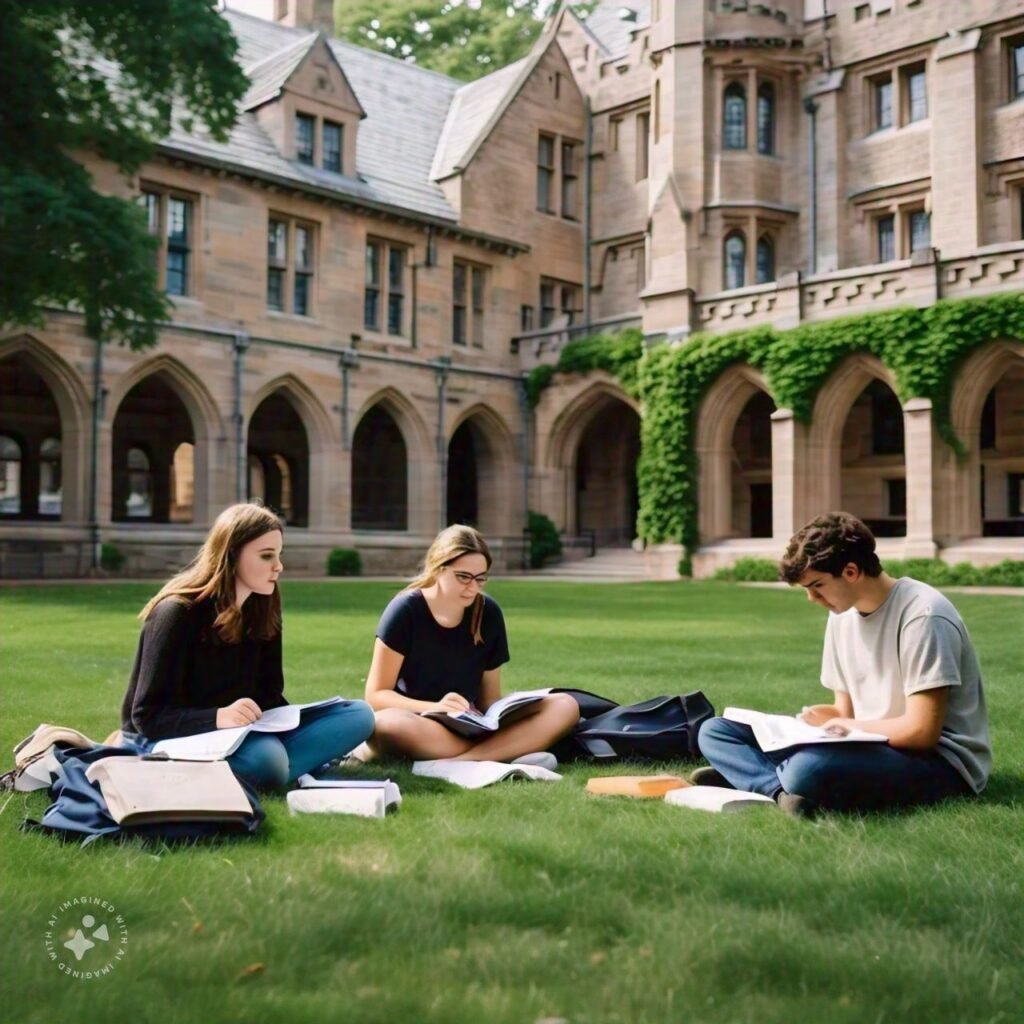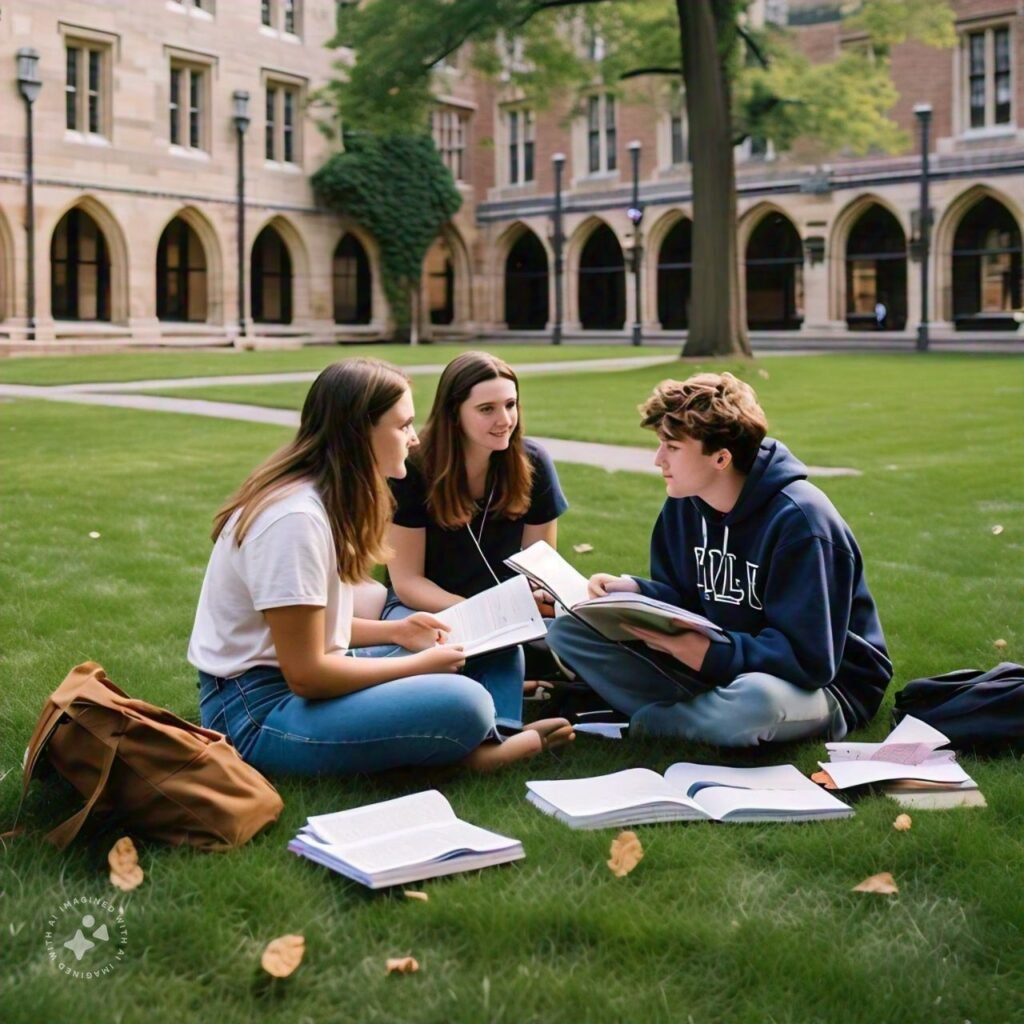
Yale University stands as one of the most prestigious academic institutions in the world, a beacon of learning, culture, and history. From its ivy-clad walls to its iconic towers, Yale’s campus is a living testament to centuries of academic excellence and innovation.
Founded in 1701, Yale University has a storied past that intertwines with the very fabric of American history, from its colonial roots to its modern-day influence. As one of the oldest institutions of higher education in the United States, Yale has played a pivotal role in shaping the intellectual landscape of the nation.
Yale was originally established as the Collegiate School in Saybrook, Connecticut, with the aim of training clergy and political leaders. It wasn’t until 1718, after a generous donation from Elihu Yale, a wealthy merchant, that the school was renamed Yale College and relocated to New Haven.
Yale’s campus is a harmonious blend of Gothic, Georgian, and modern architecture. Iconic structures such as the Sterling Memorial Library and Harkness Tower evoke the grandeur of European cathedrals, while newer buildings like the Beinecke Rare Book & Manuscript Library showcase contemporary design. Each corner of the campus tells a story, from the historic Old Campus to the modern Science Hill.


Yale has produced a remarkable array of alumni who have gone on to leave their mark on the world. From U.S. Presidents like George H.W. Bush and Bill Clinton to influential artists like Meryl Streep and Langston Hughes, the university’s legacy is reflected in the achievements of its graduates.
Just a stone’s throw away from Yale’s bustling campus lies the Yale Peabody Museum of Natural History, a sanctuary for those eager to explore the wonders of the natural world. Founded in 1866, the museum has become a cornerstone of natural history education and research.
Symbolic Picture
The Peabody Museum was established through a generous donation by philanthropist George Peabody, with the vision of creating an institution that would promote scientific knowledge and public education. Over the years, the museum has grown into one of the most respected natural history museums in the world, housing millions of specimens.
The museum’s vast collections span the entire spectrum of natural history, from the ancient fossils of dinosaurs to the cultural artifacts of early human civilizations. Visitors can explore everything from intricate dioramas of prehistoric life to rare meteorites that offer a glimpse into the origins of our solar system.
Symbolic Picture


Beyond its public exhibits, the Peabody Museum plays a crucial role in cutting-edge research. The museum’s collections are used by scientists from around the globe to advance our understanding of the natural world. Whether it’s studying climate change through fossil records or uncovering the mysteries of ancient ecosystems, the Peabody Museum is at the forefront of scientific discovery.
The Yale Peabody Museum offers a diverse array of exhibits that captivate the imagination and educate visitors of all ages. Here are a few must-see highlights:
One of the museum’s most famous exhibits, the Great Hall of Dinosaurs, features the awe-inspiring skeleton of a towering Apatosaurus, affectionately known as “Brontosaurus.” This exhibit takes visitors on a journey through the Mesozoic era, showcasing the incredible diversity of life that once roamed the Earth.
Symbolic Picture
In the Hall of Egyptology, visitors can explore the rich cultural history of ancient Egypt. The exhibit includes beautifully preserved mummies, intricately carved statues, and detailed models of ancient Egyptian life, offering a fascinating glimpse into one of the world’s most influential civilizations.
The museum’s Earth and Space exhibit delves into the mysteries of the cosmos, featuring meteorites, minerals, and interactive displays that explore the origins of the universe. It’s a perfect spot for budding astronomers and geologists to discover the wonders of our planet and beyond.
Yale University and its affiliated institutions like the Peabody Museum play a pivotal role in shaping the cultural and educational landscape of New Haven. The university’s presence has been integral to the city’s development and continues to influence its growth.
Symbolic Picture


As one of the largest employers in the region, Yale has a significant impact on New Haven’s economy and infrastructure. The university’s investment in local businesses and urban development has helped revitalize many parts of the city, making New Haven a vibrant and dynamic place to live and visit.
Yale’s commitment to community engagement is evident through its numerous outreach programs. The university partners with local schools, organizations, and residents to provide educational opportunities, cultural events, and public services that benefit the wider community.
Yale’s influence extends beyond New Haven through collaborations with global institutions, fostering cross-cultural exchange and research. These partnerships enhance the university’s academic programs and contribute to solving some of the world’s most pressing challenges.
Symbolic Picture
Planning a visit to Yale University and the Yale Peabody Museum?
Here’s what you need to know to make the most of your trip.
New Haven is easily accessible by car, train, or bus, making it a convenient destination from major cities like New York and Boston. The campus is pedestrian-friendly, and public transportation options are available for getting around town.
Yale offers guided campus tours that provide insights into its history and architecture. The Peabody Museum is open to the public year-round, with special events and exhibitions held regularly. Be sure to check the museum’s website for up-to-date information on hours and ticketing.
Symbolic Picture


New Haven boasts a vibrant food scene, with everything from gourmet restaurants to casual eateries. Don’t miss the chance to try the city’s famous pizza, known locally as “apizza.” For accommodations, a range of hotels and guesthouses are available to suit all budgets, many within walking distance of the university and museum.
Yale University and the Yale Peabody Museum of Natural History offer more than just a visit; they provide an immersive journey through centuries of knowledge, culture, and discovery. Whether you’re exploring the historic campus, marveling at ancient fossils, or simply enjoying the rich cultural atmosphere of New Haven, a trip to Yale is an experience that will stay with you long after you leave.
Reflecting on the experience, it’s clear why Yale and the Peabody Museum should be on your travel list. These institutions not only preserve and share the past but also inspire future generations to continue the pursuit of knowledge and discovery.
Symbolic Picture
1. What is Yale University known for?
Yale University is known for its rigorous academic programs, prestigious law and business schools, historic campus, and distinguished alumni. It excels in the humanities, social sciences, and arts, and is renowned for its library collections, research initiatives, and influence on American education and culture.
2. How old is Yale University?
Yale University was founded in 1701, making it over 320 years old. It is the third-oldest institution of higher education in the United States, originally established as the Collegiate School before being renamed Yale College in 1718 after a significant donation by Elihu Yale.
Symbolic Picture


3. What are the must-see buildings at Yale University?
Must-see buildings at Yale include the Sterling Memorial Library, Harkness Tower, Beinecke Rare Book & Manuscript Library, and Woolsey Hall. Each structure showcases Yale’s architectural diversity, from Gothic Revival to modern designs, offering a glimpse into the university’s rich history and cultural significance.
4. How prestigious is Yale University?
Yale University is considered one of the most prestigious universities globally, consistently ranking among the top academic institutions. It is a member of the Ivy League and is renowned for its rigorous academic standards, influential research, and notable alumni, including U.S. presidents, Nobel laureates, and cultural icons.
Symbolic Picture
5. What can you see at the Yale Peabody Museum of Natural History?
The Yale Peabody Museum of Natural History offers exhibits on dinosaurs, ancient civilizations, minerals, meteorites, and more. Highlights include the Great Hall of Dinosaurs, the Hall of Mammalian Evolution, and the Hall of Native American Cultures, showcasing vast collections that span natural and human history.
6. When was the Yale Peabody Museum founded?
The Yale Peabody Museum of Natural History was founded in 1866 through a donation from philanthropist George Peabody. It was established to promote scientific knowledge and public education and has since become one of the world’s leading natural history museums with extensive research and educational programs
Symbolic Picture


7. How does Yale University contribute to New Haven?
Yale University significantly contributes to New Haven through economic development, employment, and cultural enrichment. The university supports local businesses, invests in community projects, and offers educational outreach programs. Its presence enhances the city’s vibrancy and attracts visitors, benefiting the local economy.
8. What is the Great Hall of Dinosaurs?
The Great Hall of Dinosaurs is a famous exhibit at the Yale Peabody Museum featuring life-sized fossil skeletons of dinosaurs, including the iconic Apatosaurus (formerly known as Brontosaurus). The exhibit offers an immersive experience, showcasing the diversity and grandeur of prehistoric life.
Symbolic Picture
9. Who are some famous Yale alumni?
Famous Yale alumni include U.S. Presidents George H.W. Bush, George W. Bush, and Bill Clinton, as well as actors Meryl Streep and Jodie Foster, writer Sinclair Lewis, and journalist Anderson Cooper. Yale’s alumni network spans various fields, contributing significantly to global culture, politics, and science.
10. What academic programs is Yale University known for?
Yale University is particularly known for its programs in law, business, drama, and the humanities. Yale Law School and the Yale School of Management are world-renowned, and the university’s strong emphasis on liberal arts education fosters interdisciplinary learning and critical thinking across all its programs.
Symbolic Picture


11. How can I visit Yale University?
Visitors can explore Yale University through guided campus tours, which are available year-round. The tours typically cover key landmarks, including historic buildings, libraries, and courtyards. Visitors can also explore the Yale Peabody Museum and other cultural institutions on campus. Advance registration is recommended for tours.
12. What is unique about Yale’s architecture?
Yale’s architecture is a blend of Gothic Revival, Georgian, and modern styles. Iconic buildings like Sterling Memorial Library and Harkness Tower showcase intricate stonework and stained glass, while the Beinecke Rare Book Library represents modernist design. This architectural diversity reflects Yale’s historical depth and academic tradition.
Symbolic Picture
13. What research is conducted at the Yale Peabody Museum?
The Yale Peabody Museum conducts research in paleontology, archaeology, biology, and environmental science. Its extensive collections support studies on topics like climate change, evolution, and biodiversity. The museum’s research contributes to scientific understanding and often informs exhibits, making cutting-edge discoveries accessible to the public.
14. How large is the Yale Peabody Museum’s collection?
The Yale Peabody Museum’s collection includes over 13 million objects spanning natural history, anthropology, and archaeology. This vast collection supports research, education, and exhibits, covering everything from dinosaur fossils and meteorites to cultural artifacts from ancient civilizations.
15. What is the history of the Yale Peabody Museum?
The Yale Peabody Museum was founded in 1866 by George Peabody. It was initially focused on promoting scientific education and research. Over the years, the museum expanded its collections and became a leading institution in natural history, known for its extensive exhibits and contributions to global scientific research.
16. How does Yale University support community engagement?
Yale University supports community engagement through educational outreach programs, partnerships with local schools, and public events. The university also offers free or low-cost cultural programs, health services, and economic development initiatives, aiming to improve the quality of life in New Haven and beyond.
17. What are the highlights of the Yale campus tour?
The Yale campus tour highlights historic buildings like the Sterling Memorial Library, Beinecke Rare Book Library, and Harkness Tower. Visitors also explore the Old Campus, the center of undergraduate life, and hear stories about Yale’s history, traditions, and notable alumni, making it a rich educational experience.
18. How does the Yale Peabody Museum engage with the public?
The Yale Peabody Museum engages with the public through exhibits, educational programs, workshops, and special events. It offers guided tours, school programs, and family activities, making science and history accessible to all ages. The museum also collaborates with community organizations to expand its outreach.
19. What is the role of Yale in American education?
Yale University plays a pivotal role in American education by setting high academic standards, pioneering interdisciplinary research, and influencing educational policies. As an Ivy League institution, Yale’s innovations in teaching, curriculum development, and public service have shaped higher education practices across the country.
20. Can the public access Yale’s libraries?
Yale’s libraries, particularly the Sterling Memorial Library and Beinecke Rare Book & Manuscript Library, are accessible to the public, though some collections require appointments. These libraries house rare and unique materials, offering resources for research and public exhibitions that highlight Yale’s vast scholarly resources.
21. What is the significance of Harkness Tower at Yale?
Harkness Tower is an iconic symbol of Yale University, known for its Gothic architecture and 54-bell carillon, which chimes regularly. The tower stands as a tribute to Yale’s history and traditions and serves as a central feature of the campus, visible from many parts of New Haven.
22. What kind of fossils are on display at the Peabody Museum?
The Peabody Museum displays a variety of fossils, including large dinosaur skeletons, early mammals, and ancient marine life. The Great Hall of Dinosaurs is particularly famous, featuring a reconstructed Apatosaurus and other prehistoric creatures, offering visitors a chance to explore Earth’s ancient past.
23. What makes Yale’s law school highly regarded?
Yale Law School is highly regarded for its rigorous curriculum, distinguished faculty, small class sizes, and emphasis on interdisciplinary study. It consistently ranks as the top law school in the United States, producing influential legal scholars, judges, and public figures, and fostering a culture of intellectual exploration.
24. How does Yale University preserve its history?
Yale University preserves its history through extensive archival collections, historic buildings, and ongoing conservation efforts. The Yale University Library, the Peabody Museum, and the university’s many art galleries maintain and exhibit artifacts, documents, and artworks that chronicle Yale’s rich heritage and contributions to education and culture.
25. What can children learn at the Peabody Museum?
Children visiting the Peabody Museum can learn about dinosaurs, ancient cultures, space, and natural history through interactive exhibits, educational programs, and hands-on activities. The museum offers workshops and tours designed to engage young minds and inspire a lifelong interest in science and history.
26. How accessible is Yale University for visitors with disabilities?
Yale University is committed to accessibility, offering accommodations such as ramps, elevators, and accessible restrooms across campus. Guided tours and public events are designed to be inclusive, and the Yale Peabody Museum provides resources and services to ensure a welcoming experience for visitors with disabilities.
27. What are some hidden gems on Yale’s campus?
Hidden gems on Yale’s campus include the Yale University Art Gallery, the Marsh Botanical Garden, and the Yale Center for British Art. These lesser-known spots offer unique cultural experiences, from world-class art collections to tranquil green spaces, providing a deeper understanding of Yale’s diverse offerings.
28. What events are held at the Peabody Museum?
The Yale Peabody Museum hosts a variety of events, including lectures, workshops, and family days. Special exhibitions, fossil preparation demonstrations, and science-themed events attract visitors of all ages, offering opportunities to engage with experts and explore natural history in interactive and educational ways.
29. How has Yale influenced American politics?
Yale has significantly influenced American politics, with many alumni serving as U.S. Presidents, Senators, and Supreme Court Justices. The university’s emphasis on public service, leadership, and law has shaped the careers of political leaders who have played key roles in national and global governance.
30. What is the best time to visit Yale and the Peabody Museum?
The best time to visit Yale and the Peabody Museum is during the spring and fall when the campus is vibrant, and the weather is pleasant. These seasons offer beautiful views of the campus’s historic architecture and gardens, and the museum typically hosts special events and exhibits during these periods.